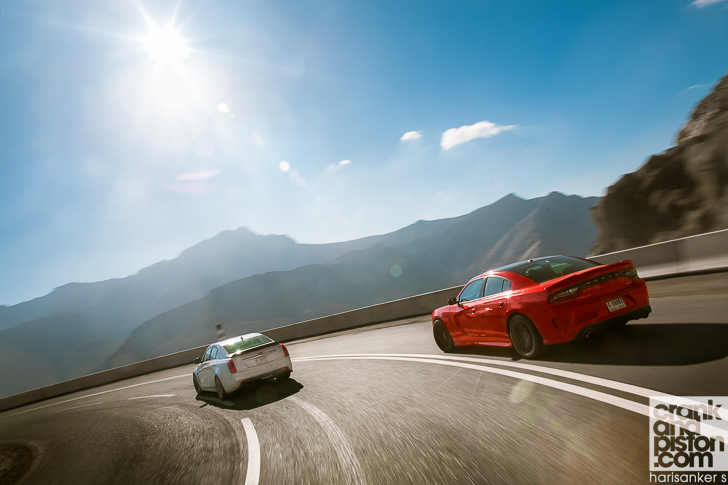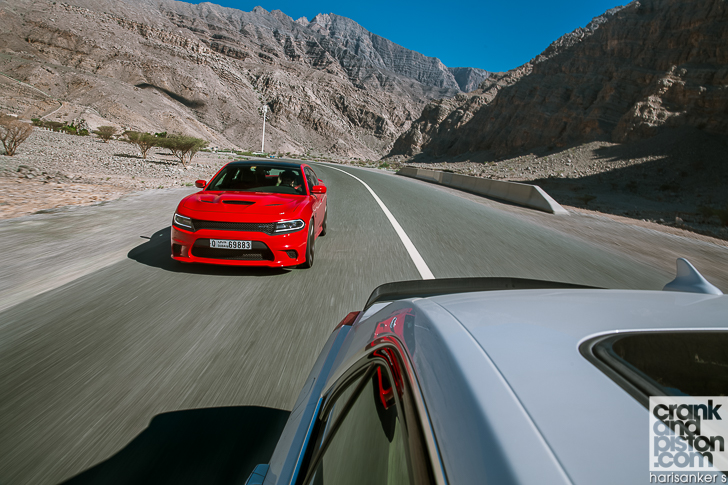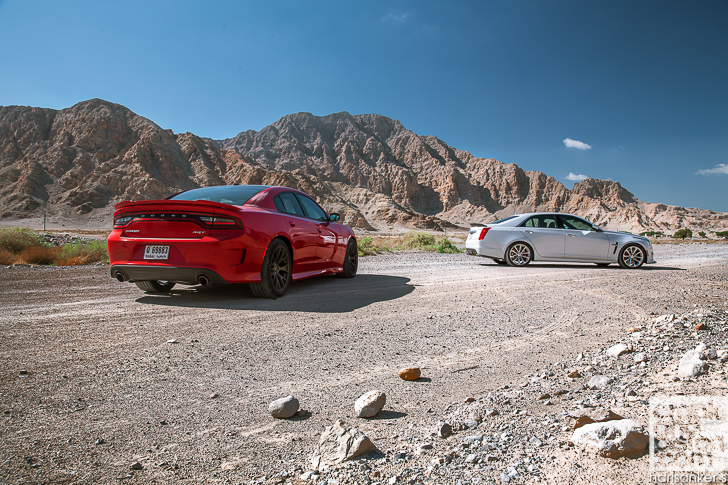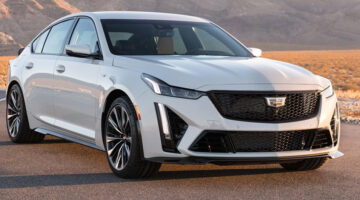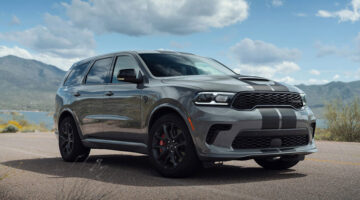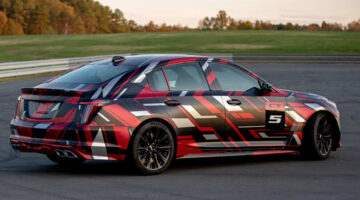There’s an immediate difference to the steering feel. Or should I say the weight of it. I’ve been critiqued in the past for referencing the ‘heft’ of a particular steering column, but in the Cadillac, commenting is mandatory. Through the first high-speed sweeper, there’s almost no power steering at all to turn the front end in. It’s startling from then-on just how much effort I’m having to put into each turn of the wheel, most of the steering – here comes another cliché – coming from the power in my shoulders. It’s a heft (sorry) that really does make a superb difference to the driving experience though. Encouraged to work much harder at the wheel, and with superb road holding from that revised Magnetic Ride Control, I start leaning on the front end even harder, feeding the power in gently to keep the nose tight to the apex. There are still minute amounts of body roll to contend with but the composure is staggering, even for a car as big and powerful as the CTS-V.
Throughout the run though, the dark front grille of the Charger has loomed menacingly in the rear-view mirror, akin to Steven Spielberg’s Duel (watch it, it’s a masterpiece). I half expect the Hellcat to start growling as it finds traction out of the corners and begins eating into the CTS-V’s lead on the straights. Time to swap seats.
It’s a striking difference from the get-go, one that immediately sends a chill down my spine. Like the Cadillac, the overall look of the cabin is a powerful one, though far more in-yer-face than the CTS-V: the speedometer is red; the steering wheel thick-rimmed; ‘SRT’ jumps out at you from the seats and dashboard; there’s a power gauge on the instrument panel that chronicles horsepower usage (which, by the by, I don’t even come close to topping); and an SRT-spec driver mode screen in the centre console. In the Hellcat, the focus is very much on performance.
I’ve got everything in hairy-bollock-ed Track mode, and even after the rear tyres have stopped scrabbling for grip and finally found traction, under turn-in the difference is striking. Compared with the weight in the steering of the CTS-V, there’s almost nothing to that of the Charger, a realisation that catches me completely off-guard into the first couple of corners: where in the CTS-V I’d found textured feedback from the front end, in the Charger the correction to the front wheels feels more remote, and coupled with a higher centre of gravity, more weight on the nose and slightly more lean in the cabin, it takes a little while for me to adjust my driving style. Even the Recaros in the Dodge, while arguably more comfortable, don’t offer quite the support of the CTS-V.
Quite honestly, mild-shock means I don’t really remember the first few corners, and it’s only when I’m through onto the first straight that I realise I’m laughing, almost maniacally. Dear Lord, this thing is truly insane!
Where in the CTS-V both the front and rear ends felt composed, in the Charger the rear end feels more manic, almost desperate to break free and destroy some rubber out of the slower turns: a couple of times I jump on the power too quickly, resulting in a spike of torque followed by armfuls of opposite lock to get things back under control, which admittedly is pretty easy to do.
After a while, and once I’ve got my eye in, I begin feeling more confident to lean on the front end. Feedback through the steering does feel comparatively vague but there’s still enough through the rack to keep me informed of what’s going on at the front. The rear wheels – mercifully – stay tight to their line and offer reasonable balance, all the better for really pushing that power on the main straights. Not that I ever see the magic ‘707’ on the power gauge.
“The dark front grille of the Charger has loomed menacingly in the rear-view mirror, akin to Steven Spielberg’s Duel”
Even more so than the difference in styles through the corners, it’s the soundtrack of each bruiser that stays with me. The CTS-V for instance, more focused as the package is on premium quality, features impressive sound deadening in the cabin, the height of the engine notes coming through via the high pitched tones of the supercharger. With the Charger though, the supercharger’s whine resonates, but it’s coupled with the basy, scintillating notes of that HEMI V8, one the Caddy struggles to match. The CTS-V’s soundtrack is a good one. But the Hellcat’s is just phenomenal.
Fortunately our mountain run ends with neither contender in the wall and our hearing only slightly dented. And I’m genuinely staggered. The looks of each had suggested this would be a very similar driving experience, but the reality couldn’t be any different. In the CTS-V, that absurd amount of power is delivered – occasionally with foreboding – but mostly with a baffling sense of refinement, the real ‘threat’ lingering beneath the surface. With the Hellcat, it’s all on the surface. Every bit of it. The Cadillac handles the corners with style and agility, while the Hellcat would prefer you go through each one sideways, and ideally on fire. Feedback from the front end borders on immaculate for the CTS-V while in the Hellcat, it feels like a sideshow to the biblical delivery of that power. Consider Hannibal Lector’s sophisticated insanity up against a chainsaw-wielding psychopath gargling brimstone and you’ll get the idea.
No question then, for a composed drive through the mountains, the CTS-V is untouchable. But for a sheer adrenaline pumping run, you’ve got to go for the Hellcat. My personal choice? Probably the CTS-V, even given the additional $30K price difference, since staring death in the face everyday could get a little exhausting.
Technical specifications available on page 3

